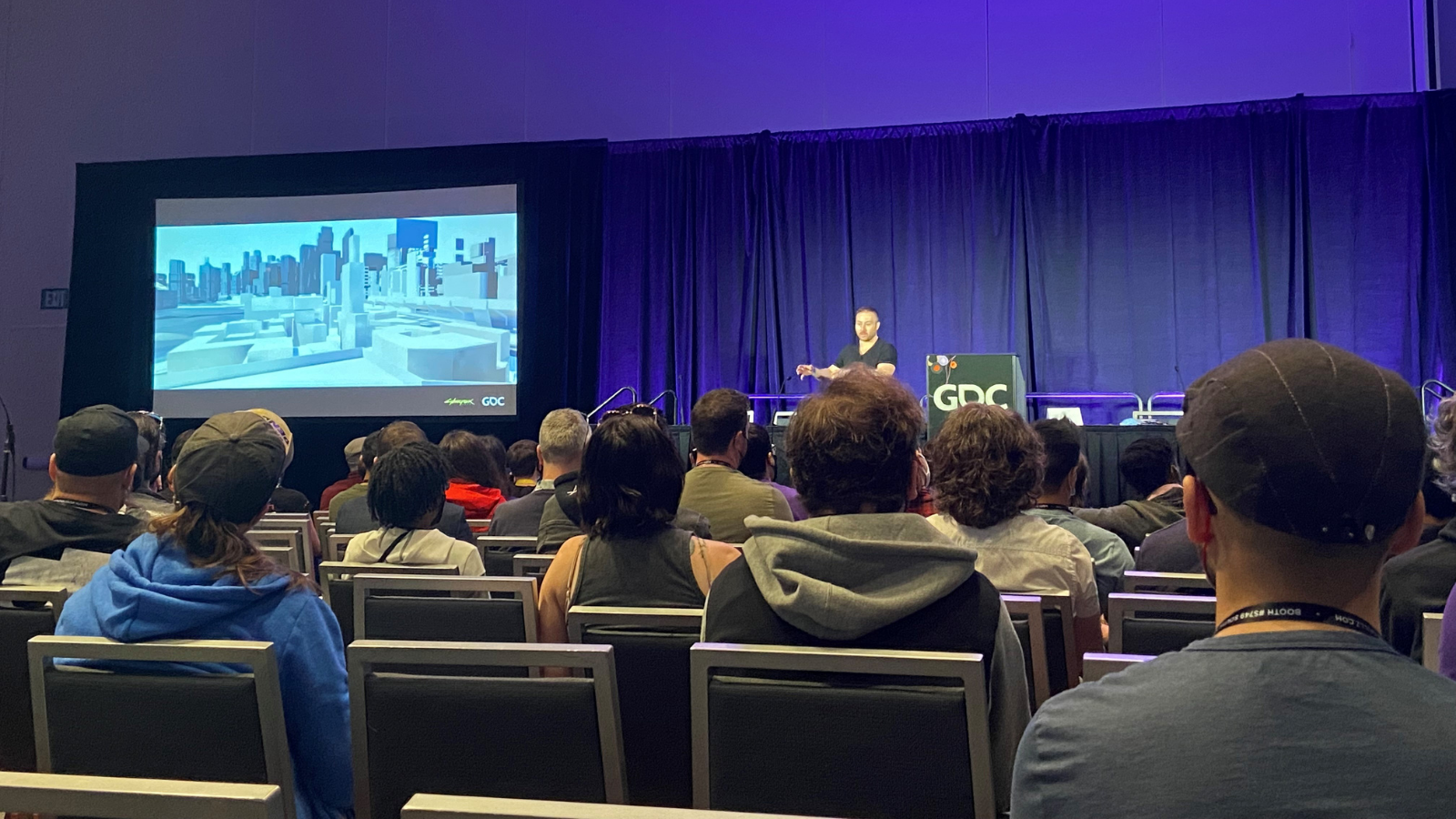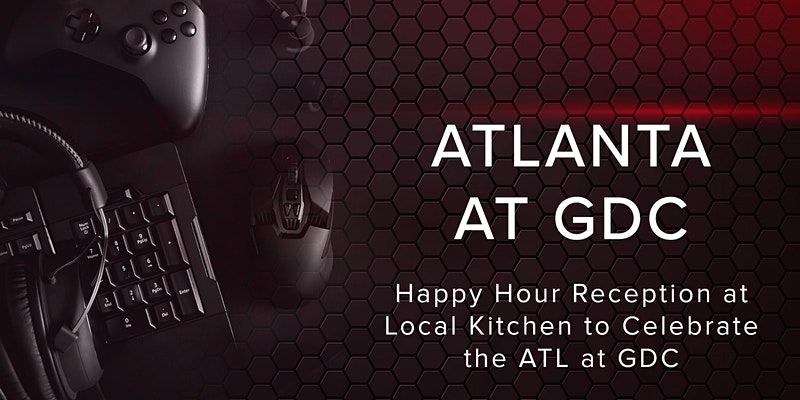GDC 2022: DAY 2

Written by Nick Foster


Art Direction Summit: Building Night City


My favorite session of day two was presented by the lead environment artist at CD Projekt Red, Kacper Niepokólcyzcki; his talk was centered around the creation of Cyberpunk 2077‘s environments. My main takeaways were to think about how you can evoke emotions through the design of the environment from the very start.
Although it may lack color and feature very limited detail, the earliest stages of your environment design should still make you feel something. The following steps of the design process should continue to strengthen that feeling you want the player to experience while playing your game. If it doesn’t, then you will need to re-iterate until you hit upon an environment better aligned with your game’s core pillars. When you are making design decisions, you should always stop and ask yourself (or your team) “WHY?” If the answer is vague or unclear, then the concept needs to be worked on.
Future Realities Summit: How NOT to Build a VR Arcade Game


Michael Bridgman (Co-founder & CTO, MajorMega) shares development tips for mitigating user motion sickness in VR experiences.
On my second day of GDC, I went to an awesome panel covering VR arcade games: the dos, don’ts, trials, and tribulations. Michael Bridgman, the developer hosting the presentation, has made incredible VR experiences, and he discussed a few tricks to help mitigate major causes of motion sickness in virtual reality. While some of it isn’t applicable to the kind of development that we do at Amebous Labs, I think he shared many interesting things worth looking into.
Day two also presented me with a chance to use the HTC Flow and the HTC Focus. The XR industry often focuses on the Oculus Quest and to a lesser extent the Vive Index, so it was very lovely to use some alternative headsets. I want to give more attention to the HTC Flow which is a lightweight VR system that takes advantage of your phone’s processing power to reduce the overall size of the headset. Five minutes with it on and I was already trying to formulate ideas for how we might use it (and how I would convince Annie to buy it…)
Meeting HTC Vive’s Developer Community


Annie tries out the HTC Focus 3’s new wrist trackers.
It was great to meet more people in the HTC Vive developer community! On day two, I got to see the new Wrist Tracker device for the Vive Focus 3. It was great to see how this hardware has enhanced hand tracking and reduced issues with occlusion.
Machine Learning Summit: Walk Lizzie, Walk! Emergent Physics-Based Animation through Reinforcement Learning


Jorge del Val Santos (Senior Research Engineer, Embark Studios) highlights a new method for animating digital assets—machine learning!
The traditional way of bringing digital assets to life consists of first rigging and then animating them, but machine learning agents (ML-Agents) present a new, physics-based option. Using a reinforcement learning approach to automatic animation, developers can bring life to creatures and critters with the click of a button — no animators involved. With that said, a fair few challenges accompany the benefits of this technique, so it may not always be the best fit for your game.
One of the greatest challenges to this technique is reward structure; because ML-Agents will be rewarded no matter how they move, they might end up learning to walk in unintended ways. For example, mixups in reward structures can cause a creature to walk using an arm and a leg because there was nothing in place disfavoring that. Another weakness of this physics-based model of animation is authorship or, in other words, your ability to bring character to your creations. At the moment, there’s no clear way of training your monsters to be scary or move intimidatingly.





